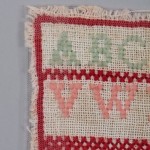
by Aisling Macken, first year student, MPhil Textile Conservation.
As first year students at the Centre for Textile Conservation, we learn a variety of methods to clean a textile, and this year the most important method is undoubtedly the process of wet cleaning. As part of the wet cleaning module that takes place during the second semester, we were each given a coloured object from a client to document, wet clean and conserve. I received a sampler from the Dumfries Museum (DUMFM:2009.31.2/CTC.247), which was stitched by Mary Swan at Collin School in 1899, and was given to the museum by her daughter in 2009.
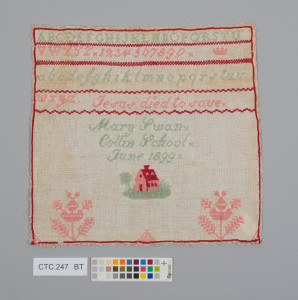
We quickly found out that the process of wet cleaning is far more challenging than we initially thought, as we learned about the polarity of water, the chemistry of detergents, as well as the importance of pH, sponges, drying time, and overall risks and benefits. I think my classmates would agree that we were all a little nervous before cleaning our textiles!
The first step in my treatment process was to photograph the sampler. This is a vital element to the conservation process, for both the client and conservator, especially before wet cleaning, as it is a treatment that cannot be undone.
One of the most vital steps in preparing the sampler for wet cleaning was to test the coloured threads for wash fastness. This is a simple test in which a small sample of each of the coloured threads is wetted with the intended detergent solution and is left to dry on a piece of cotton wool. In theory, this test will tell the conservator if the dyes in the textile will bleed in the wash bath (although this isn’t always the case). I was fortunate to have a sampler with only three different colours to test, while one of my fellow classmates, Lorna, had 12 colours to test for her sampler!
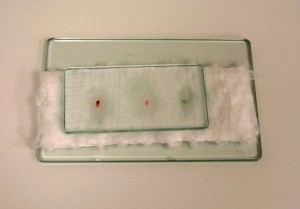
The three samples tested from the sampler showed no evidence that the colour would bleed, so I was able to begin the wet cleaning process as originally planned. I used two wash baths of conservation grade detergent and a soft natural sponge. The water from the wash baths after sponging was yellow in colour, satisfying proof that the process was working to remove the yellow discolouration and degradation products from the cotton fibres of the ground canvas. After several rinses the sampler was clean and free from detergent. I pinned the sampler to a soft board, blocking it out, to prevent the cotton substrate from becoming bunched around the wool embroidered areas. In order to speed up the drying process, I used both a stationary fan and a cool hairdryer. It is advisable to complete the drying process of a coloured object in a controlled and efficient way, as it is in the wet state that objects are often the most vulnerable, and any colours that might bleed are likely to transfer into other areas.
With my sampler dry, I was able to begin the last stage of my treatment; stabilising the object for handling and storage. The edges of the sampler were fragile, and there were a number of loose threads that were at risk. In order to protect these edges, I stitched conservation grade nylon net on both the front and back of the object, sandwiching the threads between the net. I dyed the net a colour sympathetic to the colour of the sampler substrate, and attached the net to the sampler with a fine polyester thread using two rows of running stitch.
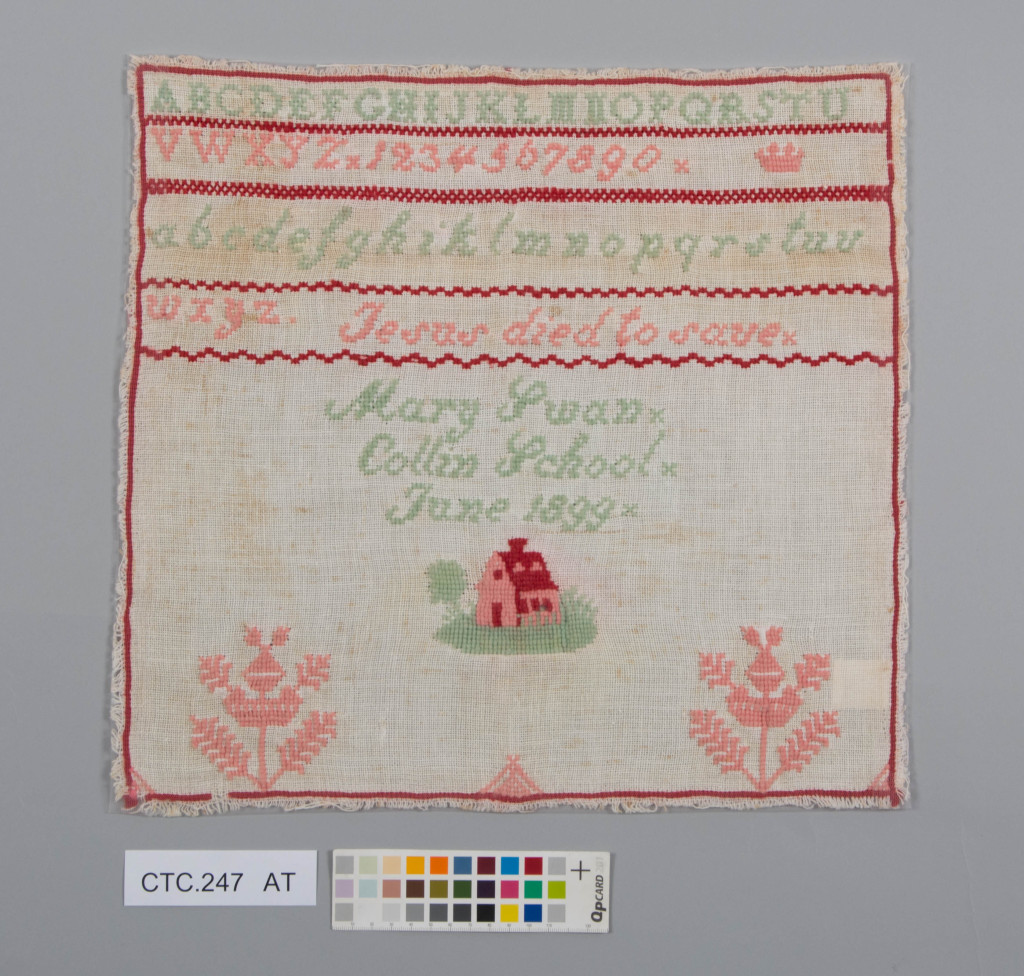
The process of cleaning and conserving the sampler was a fantastic rewarding experience. While slightly nerve wracking at times, it was amazingly satisfying to plan and execute a conservation treatment from beginning to end.


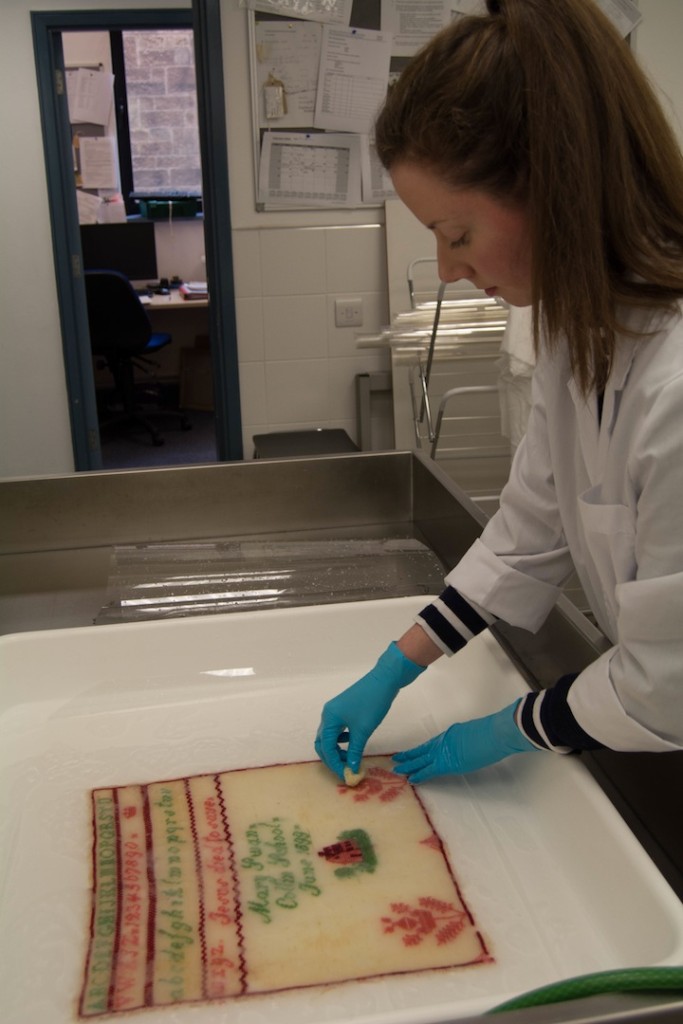
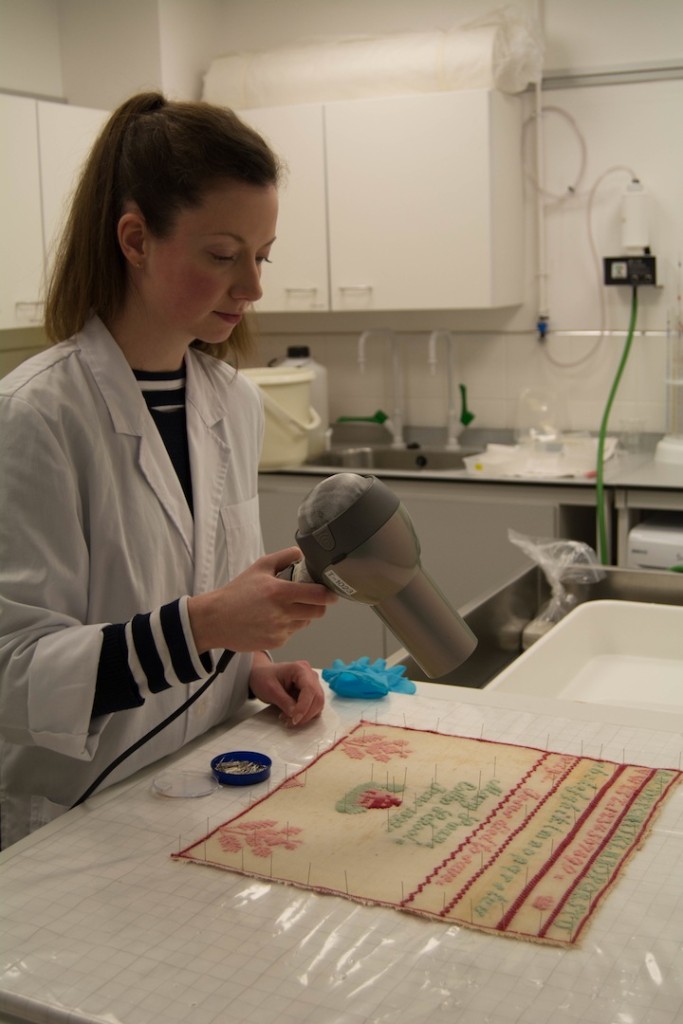

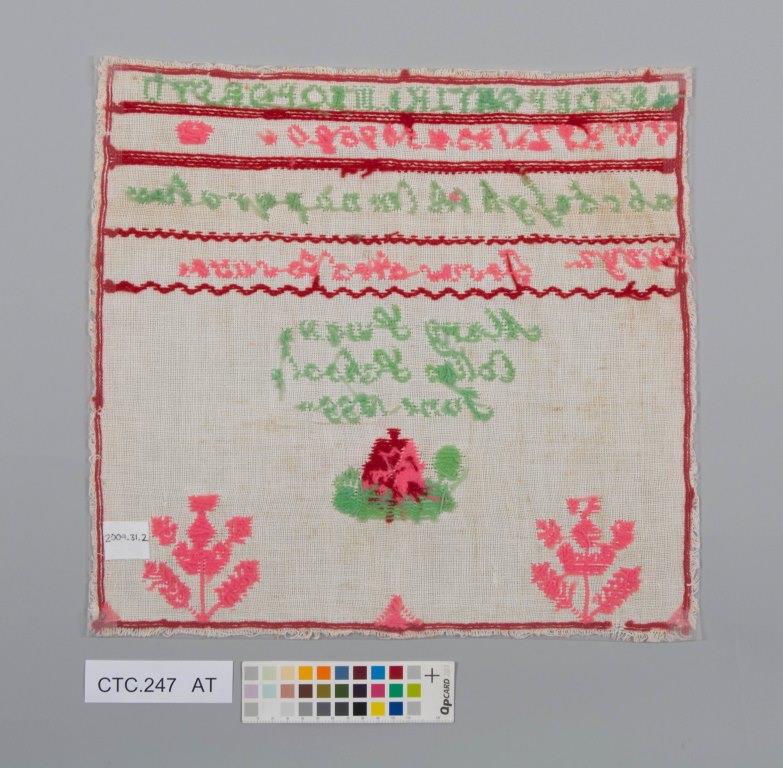
is your facility a place where I can send my sampler to be cleaned? If so, what is the fee? My sampler is roughly 12 inches by 12 inches, and dates to 1813. If you do not perform this, can you suggest a place that might, or can you suggest a source where they will tell me the procedure and products so I can do the cleaning myself.?
Dear Sam,
Many apologies for not having replied sooner and thank you for reading the blog. The best place to find a trained conservator is the Institute of Conservation, Conservation Register https://www.conservationregister.com/.
Cleaning samplers is complex because the coloured threads are often not wash fast – the dyes used are often not well fixed to the fibre and will run when the sampler is wet, staining the surrounding area. It is something to be aware of if you are considering washing it yourself, especialyy on a sampler as old as 1813 which is really quite early.
Best wishes
Sarah